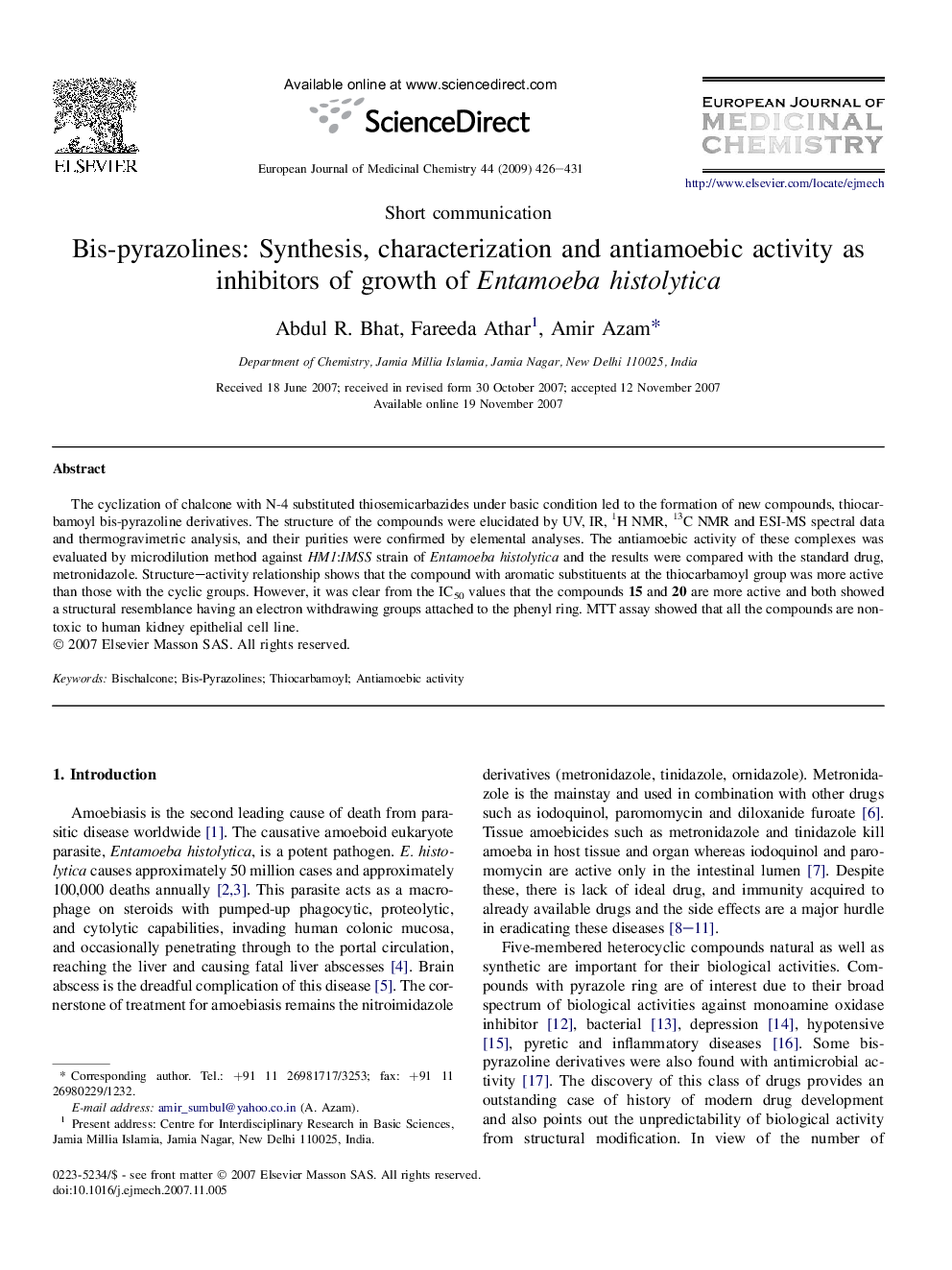| Article ID | Journal | Published Year | Pages | File Type |
|---|---|---|---|---|
| 1398066 | European Journal of Medicinal Chemistry | 2009 | 6 Pages |
The cyclization of chalcone with N-4 substituted thiosemicarbazides under basic condition led to the formation of new compounds, thiocarbamoyl bis-pyrazoline derivatives. The structure of the compounds were elucidated by UV, IR, 1H NMR, 13C NMR and ESI-MS spectral data and thermogravimetric analysis, and their purities were confirmed by elemental analyses. The antiamoebic activity of these complexes was evaluated by microdilution method against HM1:IMSS strain of Entamoeba histolytica and the results were compared with the standard drug, metronidazole. Structure–activity relationship shows that the compound with aromatic substituents at the thiocarbamoyl group was more active than those with the cyclic groups. However, it was clear from the IC50 values that the compounds 15 and 20 are more active and both showed a structural resemblance having an electron withdrawing groups attached to the phenyl ring. MTT assay showed that all the compounds are non-toxic to human kidney epithelial cell line.
Graphical abstractThe cyclization of chalcone with N-4 substituted thiosemicarbazides under basic condition led to the formation of new compounds thiocarbamoyl bis-pyrazoline derivatives. The antiamoebic activity results shows that the compound with aromatic substituents at the thiocarbamoyl group was more active than those with the cyclic groups. MTT assay showed that all the compounds are non-toxic to human kidney epithelial cell line.Figure optionsDownload full-size imageDownload as PowerPoint slide
